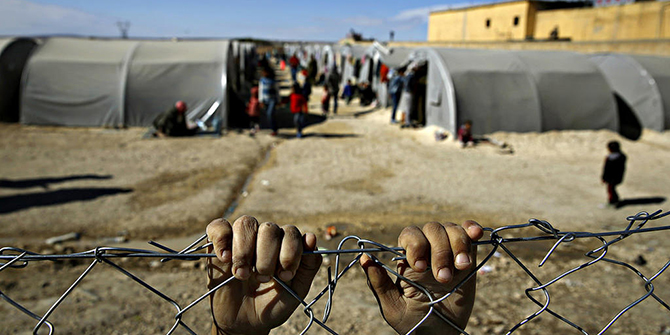by Jenny McArthur
Farah Al-Nakib will be discussing her new book on Thursday 3 November at an LSE Middle East Centre event.

Kuwait Transformed traces the history of Kuwait’s urban development, in a well-researched account of the interplay between economic transformation, the built environment and everyday life in the Gulf nation of four million. While Kuwait Transformed is an urban history, Farah Al-Nakib grounds her writing in the present to reflect on Kuwait’s current challenges. The book retells the city’s history and also sets out a vision for Kuwait to reclaim its urbanity, with greater citizen involvement in planning and a more vibrant public life. Acknowledging her own perspective as a Kuwaiti, the author provides both critical reflection on the city she was raised in, as well as a keen interest in restoring a new kind of urbanism. Kuwait Transformed critiques urban planning in Kuwait since the discovery of oil in 1932. The pursuit of modernity, and adoption of both Western planning practices and lifestyles, are criticised for creating a built environment where private life is valorised above the shared, public life of pre-oil Kuwait. This text extends in many ways on the seminal work of Saba George Shiber, a former planner in the Kuwait Ministry of Public Works, who published The Kuwait Urbanization in 1964. Shiber witnessed Kuwait’s rapid transformation first-hand, and produced a comprehensive critique of the ‘meteoric, radical, ruthless’ effects of oil revenue, removing all physical evidence of the city’s past and causing social upheaval. Fifty years on, Kuwait Transformed reflects on the longevity of these impacts and continued urban change.
Following discovery of oil reserves in 1932, Kuwait’s built environment was completely recast by a major state-led modernisation project. Prior to the discovery of oil, Kuwait had no municipal authority and urban planning was non-existent. However, the informal practices governing construction and expansion allowed the city to evolve to meet the everyday needs of the local –mostly maritime – economy in the extreme climate that sees daytime temperatures of up to 50°C during the summer. A local municipality was created to replace informal governance of building and land allocation in the pre-oil city, and planning consultants from the UK developed Kuwait’s first urban plan in 1951.
The enormous wealth-creation that resulted from Kuwait’s oil resources was accompanied by reformed local governance and new welfare policies. A key policy introduced in 1951 guaranteed Kuwaitis their own house, initially a single-family villa on a generously-sized plot. To provide this, Kuwait suburbanised. Before oil, the city was compact in form and most travel took place by foot. The 1951 urban plan supported expansion into the surrounding desert area. Construction of roading infrastructure and generous fuel subsidies supported the transition to private vehicles as the dominant mode of transport, ideal to support the dispersed residential developments extending from the city’s periphery. However, Kuwait Transformed challenges the common perception that Kuwait’s transformation was a tabula rasa, sweeping away the former history with the destruction of the built environment. Instead, elements of Kuwait’s pre-oil society have survived the city’s physical transformation. The text traces Kuwait’s history since its earlier days as a small, cosmopolitan port city. Al-Nakib draws from the urban theory of Henri Lefebvre, Richard Sennett and David Harvey to look critically at the relationships between the spatial and the social in Kuwait. Kuwait has seen dramatic demographic shifts along the trajectory of growth and development that increased after the discovery of oil. Expatriate workers now account for approximately 70% of the city’s population, and the exclusivity of the privileges given to Kuwaiti nationals created a barrier to integration between citizens and expatriate workers.
Farah Al-Nakib provides depth of insight into Kuwait’s urban development and societal change. International media have cast GCC cities as places of spectacle, with futuristic towers emerging from nothing in the desert. Kuwait Transformed extends on more grounded academic perspectives that focus on the everyday cultures and socio-spatial relations that develop below each city’s eye-catching skyline. While Kuwait has its share of starchitecture and high-rise towers, Kuwait Transformed shows the city’s rich history and complexity, and potential for a renewed public life.
 Jenny McArthur is an urban researcher at LSE Cities working on the Resource Urbanisms project, using comparative spatial analysis to investigate the interactions between natural resources, mobility and urban form in four Asian cities. She tweets @jen_m_mcarthur.
Jenny McArthur is an urban researcher at LSE Cities working on the Resource Urbanisms project, using comparative spatial analysis to investigate the interactions between natural resources, mobility and urban form in four Asian cities. She tweets @jen_m_mcarthur.

Farah Al-Nakib is Assistant Professor of History and Director of the Center for Gulf Studies at the American University of Kuwait.




